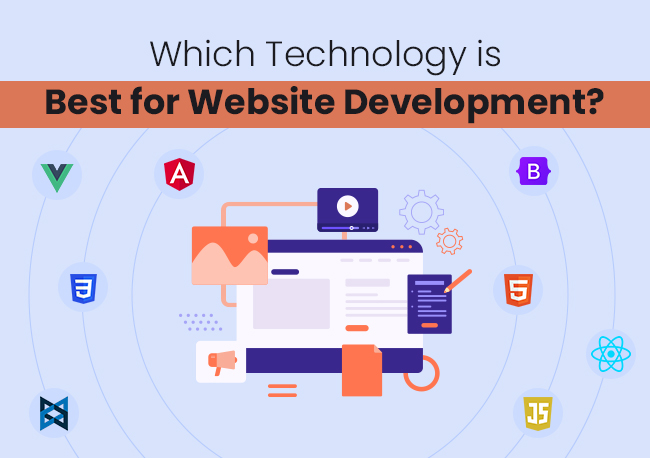| Getting your Trinity Audio player ready... |
PHP, .Net, Angular, Node, Vuejs, Ruby On Rails, Django, MySQL, MongoDB, the digital landscape is teeming with a variety of robust and cutting-edge technologies, drawing potential website owners to develop a next-gen website leveraging their immense capabilities and versatility.
However, exploring this vast terrain can be challenging, overwhelming, and time-consuming, even if you are familiar with these impressive frameworks, as the right compilation of frontend, backend, server-side, and database is crucial to ensure seamless user interaction and search engine optimization.
But hey! Why fear when we are here?
Punctuating the cliché with a period and inviting you to delve deeper into our narrative on the most popular and preferred technologies for website development.
Understanding Different Website Development Technologies
➢ Programming Languages
1. HTML
HTML, widely regarded as the HyperText Markup Language, was introduced 30 years ago in 1993 by W3C, currently known as WHATWG World Wide Web Consortium. Almost everyone around the world is conversant with this legacy framework, especially developers, as this is one of the basic languages that help them lay the foundation for learning other technologies.

HTML helps you craft structured documents using semantics for texts like headings, paragraphs, lists, links, quotes, etc. Further, this language is compatible with major browsers like Google, Bing, Firefox, and more, different platforms such as Windows, macOS, and Linux, and booming technologies such as CSS and JavaScript.
Advantages of HTML
★ Easy to learn and understand.
★ Adaptable across different platforms, technologies, browsers, and devices.
★ Search engines can easily crawl and index HTML websites.
★ HTML supports accessibility features like semantic elements & ARIA attributes.
★ Backward compatibility for older code to render in newer versions.
★ HTML has an open standard that allows developers to use the language without proprietary.
Disadvantages of HTML
★ HTML has limited functionality and primarily focuses on structuring content.
★ HTML has design and layout constraints.
★ HTML does not have robust security features.
★ Creating dynamic and interactive content can be challenging.
★ Maintaining complex and large documents can be difficult.
★ HTML’s capabilities do not allow it to interact directly with the database.
Also Read: Best YouTube Channels For Learning Web Development
2. CSS
CSS, also known as Cascading Style Sheet, is a programming language created by W3C (WHATWG World Wide Web Consortium) about 27 years ago on 17th December 1996. CSS is generally utilized for highlighting a presentation and styling a document in markup languages such as HTML or XML. Basically, it breathes life into basic HTML documents.
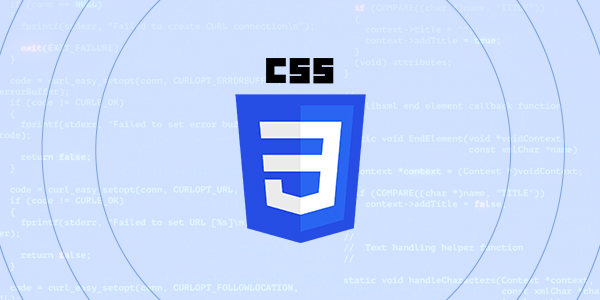
The latest version of CSS, which is W3.CSS 4.15, released in December 2020 with features such as box-shadow, opacity, rounded corners, attribute selectors, new colors, and fonts. Additionally, it corresponds to the prominent browsers, including Microsoft Edge, Mozilla, Firefox, Chrome, and Safari.
Advantages of CSS
★ CSS allows you to segregate the style from content and structure.
★ The styling mechanism of CSS offers cohesiveness across all pages on a website.
★ Different styles of CSS can be utilized on various elements and pages.
★ The layout created using CSS is adaptable to diverse screen sizes.
★ Centralizing styles in external CSS helps seamlessly update the visuals and changes made into the style sheet apply to all the pages linked with the external sheet.
★ External CSS files can be stored by browsers, resulting in quick turnaround times.
★ It can specify unique styles for print media.
★ It supports animation and transitions for a visually appealing experience.
Disadvantages of CSS
★ Understanding and mastering CSS concepts can be tricky.
★ Controlling complicated layouts can be demanding and complex as it is a styling language with limitations.
★ Older versions do not endorse variables.
★ It does not have inherent security features.
★ Excessive usage of compound style sheets can impact the performance of a website.
★ Selecting simple styles might be necessary to ensure a consistent response on all browsers.
Also Read: Will AI Replace Web Developers – Know The Truth
3. JavaScript
JavaScript, or JS, is a programming language and one of the most robust and widely used technologies created by the World Wide Web 28 years ago on December 4th, 1995. JavaScript was developed with the intention of incorporating complex attributes into a website, like 2D/3D visuals, Google Maps, chat bot, and similar others for making a dynamic website.

This client-side scripting language can be utilized side by side with a variety of technologies, including Node.js. Unlike the previous two, JavaScript contributes to modern-day demand, like creating and manipulating objects, offers a robust and event-driven programming paradigm, and stands out for its prowess in ensuring cross-browser compatibility with a vast ecosystem of libraries and frameworks.
Understanding user experience to optimize end-user outcomes effectively includes tools like the Real user monitoring tool, which helps quickly identify issues affecting the performance, connectivity, or responsiveness faced by actual users. With real-time monitoring and detailed insights, developers can troubleshoot faster and enhance overall efficiency.
Advantages of JavaScript
★ JavaScript has built-in security features.
★ It is a lightweight language without the need for hefty softwares or hardware infrastructure.
★ JavaScript is faster than other scripting languages and effortlessly manages tough calculations and operations.
★ It is easy to learn and utilize.
★ Its capability to run on the client side eliminates the server load and overhead.
Disadvantages of JavaScript
★ The infrastructure of JavaScript is comparatively less hardcore, resulting in security issues like XSS attacks, hacking, and more.
★ Every browser comprehends JavaScript’s code differently, leading to variation in response.
★ Too much reliance on client-side processing can impact performance, especially on devices with limited resources.
★ It is a single-threaded language.
★ The client can access JavaScript code, increasing the chances of security breaches and unwanted exposure to sensitive logic or algorithms.
★ It has limited storage capacity.
★ JavaScript is highly dependent on external APIs, and any change or discontinuation of them can impact the website’s functionality.
★ JavaScript is not suitable for large-scale applications.
★ Search engines may struggle to index and crawl Javascript-based websites.
Also Read: What Makes A Good Website Checklist? A Complete Guide
➢ Frontend Frameworks
1. React
React is a free, open-source JS library developed by Meta and Community on May 29, 2013. This frontend technology is ideal for creating single page apps, websites, and server-rendering applications. It is built with reusable components, and developers can easily code with HTML elements and components thanks to its syntax extension.

React is designed to go hand in hand with popular browsers and can be integrated with various backend technologies.
Advantages of React
★ This JavaScript library is built with reusable components for effortless code management.
★ React allows one-way data binding, making it easier to comprehend the data changes throughout the application.
★ React has a rich ecosystem of third-party libraries and tools.
★ React has an active community that offers abundant resources, documentation, and effective solutions.
Disadvantages of React
★ Mastering React can be arduous for developers, especially for a novice.
★ It may need extra boilerplate code for certain features, such as state management.
★ React frequently undergoes updates, keeping developers and learners on their toes to stay on the top to be relevant.
★ Wrong collaboration of the tools and libraries with React can disrupt the environment.
Also Read: How Can You Make A Website Look More Professional?
2. Angular
One of the most mainstream open-source frontend technologies, Angular, developed by Google in September 2016, was created in TypeScript and JavaScript.
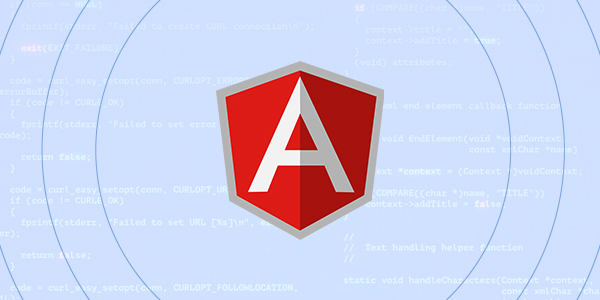
Currently, the framework is managed by the Angular team at Google, and the latest version, 17.0.7, was released on 13th December 2023 with cutting-edge features like Angular signals, server-side rendering, experimental jest support, esbuild-based build system, router inputs, standalone project support, self-closing tags, cease of support for ngcc & TypeScript 4.8. and auto importing of components & pipes through language service.
Angular actively supports almost every version of Node.js. TypeScript, RxJS, and other backend technologies and primary web browsers.
Advantages of Angular
★ Angular simplifies the coordination between the model and the view, minimizing the boilerplate code.
★ Thanks to TypeScript, Angular allows developers to type statically, which improves code quality, offers better tooling support, and detects errors at the early stage.
★ Injections used in Angular promote modularity, testability, and maintainability.
★ It is a full-fledged framework with attributes like routing, forms, HTTP clients, and others.
★ Its architecture encourages developers to organize the code into modules.
★ Angular leverages RxJS for reactive programming for developers to manage multiple data streams and events simultaneously.
★ Angular CLI automates basic development to ease the creation, testing, and deployment of Angular applications.
Disadvantages of Angular
★ Learning Angular can be considered an uphill battle as compared with other frontend technologies.
★ Some Angular applications might require boilerplate code, which increases the time of the development cycle.
★ Angular is known to be heavier in measurement than other frontend frameworks.
★ Angular has certain conventions and patterns that may reduce flexibility for developers who prefer freedom and wish to add their touch to the development.
Also Read: 5 Best Website CMS Detector Tools You Must Try
3. Vue.js
Vue.js, one of the most thriving frameworks created on TypeScript by Evan You in February 2014 with the aim of developing captivating and user-friendly interfaces and single page applications. This open source frontend framework brings out progressive features like routing, state management, and build tooling, ideal for applications with comprehensive infrastructure.

Its components offer cross browser compatibility, and combining it with other prominent technologies is no sweat. One of the best characteristics of Vue.js is its ability to synchronize with the project’s demands. Whether you are developing a next generation application or designing a simple single-page layout, this framework will work like a hand in glove with your ideas.
The latest version of Vue.js, 2.7 Naruto, was launched on July 1st, 2022, with enhanced features, including built-in support for the composition API.
Advantages of Vue.js
★ Using Vue.js is pretty straightforward and can be easily incorporated into projects with ongoing development.
★ Vue.js leverages reactive data binding, automating the changes across every layout.
★ The component based architecture of Vue.js facilitates reutilization and management.
★ The Vue CLI in Vue.js eases the project’s scaffolding, building, and maintenance.
★ Vue.js has an elaborate and systematic arrangement of documents for developers to find and refer to the information when developing an application.
Disadvantages of Vue.js
★ Vue.js has a small scale ecosystem tantamount to React and Angular.
★ It is operated by a small team of developers in comparison to React and Angular.
★ Shifting from Vue 2 to 3 demands adjustments, time, and effort.
★ Developers might face inconsistency and maintenance issues based on the project’s structure.
Also Read: Website Optimization Tips To Increase Website Performance
➢ Backend Technologies
➔ Server-Side Scripting
1. PHP
PHP also stands for Hypertext Preprocessor, is a backend scripting language created by Danish-Candian programmer Rasmus Lerdorf in 1993. Even though the technology was created in 1993, it was launched 2 years later with final modifications. Since 1995, PHP has witnessed various transformations, and today, it stands tall as one of the universally loved languages.

The latest version of PHP, 8.3.1., came out a few days back, specifically on 21st December 21, 2023, with spectacular improvements like typed class constants, added json_validate function, dynamic class constant, enum member fetch support, Granular datetime exceptions, get_class() and get_parent_class() function calls without arguments deprecated, and so many more.
Advantages of PHP
★ PHP is open source, free to download, and used for creating web apps.
★ It is stable across every well-known operating system like Linux, Windows, Unix, and others.
★ PHP offers a fast turnaround time for websites and data.
★ It is extremely simple to understand and employ in web development.
★ It promotes code reusability, streamlining the process and structure of the code.
★ PHP has a massive library that enhances functionality and offers additional tools for developers to work on various tasks without a hitch.
★ The innate database connection modules assist developers in linking the database conveniently.
★ It can be used in composition with many programming languages.
Disadvantages of PHP
★ Security can be concerning as the language is open source and easily accessible to unwanted users.
★ PHP is not designed for handling large content based web apps.
★ Its weak type can lead to inaccurate data and information.
★ More usage of tools and features results in slow performance.
★ Developers cannot alter the foundational features of PHP.
★ PHP loses out on debugging tools, causing developers to not receive warnings immediately and face errors.
Also Read: WordPress Vs PHP Websites – Difference To Know
2. Python
Designed by Guido van Rossum in 1991, Python is a top notch programming language, emphasizing code readability for developers to collaborate with the technology without any trouble. The language teems with numerous paradigms, such as procedural, object oriented, and functional programming.

The last stable version of Python, 3.12.1., was released on December 8, 2023, with versatile and powerful features like flexible f-string parsing, support for the buffer protocol in Python code, new debugging/profiling API, large and small performance improvements, and so many more.
Advantages of Python
★ Python’s syntax is easy to interpret and use, even for novice users.
★ It has a rich library offering a wide range of tools, modules, and packages.
★ Python’s community offers constant support with their reliable resources and for the growth of the technology.
★ Python has cross platform compatibility, ensuring a seamless response and performance regardless of the OS.
★ C, C++, and many other languages can be integrated into Python without a snag.
★ The simplicity of Python offers rapid prototyping and development.
★ The diverse capabilities of this scripting language are ideal for small and large scale projects.
Disadvantages of Python
★ Developers may anticipate a slower execution in highly critical applications.
★ The Global Interpreter Lock (GIL) can influence multi-threaded performance, reducing the full potential of multi-core processors.
★ Python may not be the best choice for mobile app development.
★ Python is the least preferred choice for memory intensive tasks.
★ Python is highly dependent on third party libraries and frameworks, making it vulnerable to changes or cyber attacks.
★ Python may not be suitable for gaming or trading domains.
Also Read: What Is Apache Server And How It Works?
3. Ruby
First appearing in 1995, Ruby, a C language created by Yukihiro Matsumoto, boasts about its productivity and simplicity. The name was derived from a conversation between Matsumoto and Keiju Ishitsuka way before they wrote the script of the language. Coral and Ruby were the first two names given to Matsumoto as a choice, and he went for the latter one.

The latest version of Ruby 3.3.0 was launched on the widely celebrated holiday of the winter season — Christmas, with advancements like a new parser called Prism, replaced Bison with Lrama LALR parser generator, updated MJIT with pure-Ruby JIT compiler RJIT, introduced M:N thread scheduler, fixed compatibility issues, conducted standard library updates, and made significant improvements over Ruby 3.2
Advantages of Ruby
★ An open-source language with endless community support for steady enhancements.
★ The language is extremely flexible, allowing developers to modify the code without any stumble or delay.
★ The language is designed to be utilized by newbies and seasoned developers.
★ Apart from the web applications, Ruby can also be leveraged for desktop applications and command line programs.
Disadvantages of Ruby
★ Developers may notice slow response times.
★ The language has a complex syntax which can be difficult to comprehend.
★ Even though Ruby is a flexible language, it may not be for everyone as its code is tough to read and maintain.
★ Ruby has relatively fewer libraries and tools than other server-side languages.
Also Read: How To Fix A Slow Website?
➔ Server-Side Frameworks
1. Django
Developed by Adrian Holovaty, Simon Willison, and Jacob Kaplan-Moss working under the Django Software Foundation, this server-side, free, and open-source framework can be traced back to 2005, when it was created to build web pages seamlessly.
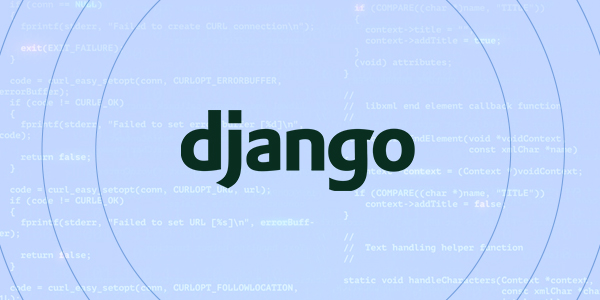
Today, Django has become eminent in the development realm, boasting impressive aspects like scalability, versatility, swift development cycle, asynchronous ORM interface, SEO friendliness, etc.
Advantages of Django
★ Django’s framework ensures rapid development for a clean and practical design.
★ It has an ingrained admin interface for efficient management and updating data models without creating admin panels.
★ The ORM system used in Django enables developers to craft a database without using Python’s code.
★ It has the capability to combat well-known vulnerabilities, including SQL injection, cross site scripting (XSS), and cross site request forgery (CSRF)
★ The scalability of the technology guarantees to handle increased traffic.
★ It is designed using reusable components, assisting developers to adjust the code to the project’s demand.
★ The framework has a large community that stays available for constant support to developers.
★ The REST framework in Django helps create RESTful APIs to build web services.
★ Middleware components assist developers in easily processing the responses for upgrading the application’s behavior.
Disadvantages of Django
★ Mastering Django can be a tough nut to crack.
★ The monolithic structure can tie developers to limitations, especially the ones with a modular approach.
★ Django’s features can be considered overqualified for small-scale projects.
★ URL routing in Django is believed to be complicated for high-end projects with multiple views and URLs.
★ It might not be the most ideal choice for developing real time applications.
Also Read: 5 Best Website CMS Detector Tools You Must Try
2. Flask
Flask is a minimal, lightweight web framework written in Python by Armin Ronacher on April 1st, 2010. This server side framework is swamped with various exceptional tools, allowing developers to create web apps in Python.

Flask is characterized as a micro framework because it has no libraries, database abstraction layer, record authentication, or other components. In fact, it uses extensions for developing the functionalities of an application.
The stable version of Flask, 3.0.0, was marketed in the industry on 30th September 2023, with updates like the removal of deprecated code & the __version__ attribute, revamping the coding, allowing self as an argument to url_for, and more.
Advantages of Flask
★ Flask is fairly simple to fathom, even for beginners.
★ The structure is straightforward and can be altered according to the needs.
★ The inherent server, debugging tools, and RESTful request dispatching ensure rapid and effortless unit testing.
★ Flask has systematic and clean documentation.
★ The Jinja2 template engine used in Flask is the most robust and effective way to decipher the content in web apps.
Disadvantages of Flask
★ Since it relies on a single source and cannot be scaled, it handles one request at a time, becoming a time consuming job.
★ More usage modules equate to deeper involvement of third parties, raising security concerns.
★ Developers have to invest time and make thoughtful decisions on architecture and components because of its simple environment.
★ Developers have to leverage extensions because of Flask’s fewer in-built features.
★ Developers need to manually configure and incorporate additional components for major tasks like submission verification, database integration, etc.
★ Developers have to opt for an external ORM to manage and store databases.
★ The community of Flask may not be as large as other server side frameworks.
3. Express.js
Express.js is a server side framework, discovered in 2010 by IBM and Strongloop. Much like Flask, Express.js or Express is also a lucid and agile technology that is free, open source, built on Node.js, and used for developing single, multi, and hybrid web applications.
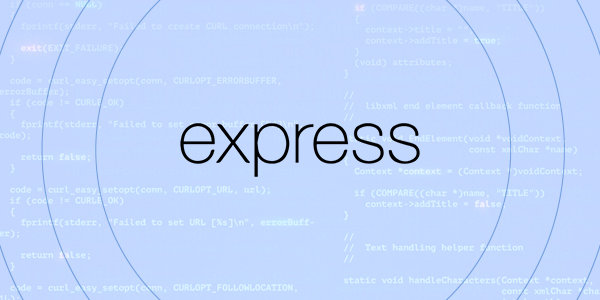
Express.js is a feature-rich language with flexible routing capabilities, express middleware, template engine support, MVC architecture support, effortless API development, error handling capabilities, and JWT (JSON Web Token) integration.
Advantages of Express.js
★ It is an objective language, allowing developers to add their touch to the development process.
★ Since the framework is written in JavaScript, it can be used for frontend as well as backend development.
★ Connecting Express.js with databases like MongoDB, MySQL, and PostgreSQL is a piece of cake.
★ Express.js helps to cut down expenses on tools as it is open source and secured by an MIT license.
★ Developers familiar with the Node.js environment can seamlessly grasp the concepts of Express.js.
★ Creating APIs on Express.js is fairly simple.
★ Express.js optimizes code and resources for improving the performance of web apps.
★ The existing tools and libraries ensure the quick completion of a project.
★ A huge team of developers unceasingly works hard to enhance the functionalities of the language.
Disadvantages of Express.js
★ The language does not have a mapped-out structure, making it complicated for developers to maintain a pattern for the code.
★ It does not have an effective error handling capacity.
★ It does not have native security walls, opening the doors to unauthorized users or unwanted attacks.
★ The language may not be an excellent choice for developing real time web applications.
Also Read: Website Development Checklist To Help Create Your First Website
➢ Database Technologies
➔ Relational Databases
1. MySQL
MySQL, also known as My Structured Query Language, is a community driven database management system developed by Oracle, MySQL AB, Michael Widenius, Sun Microsystems, and David Axmark on 23rd May 2005 with the aim to contribute a secured space for developers to store data of the app, web, and similar other.
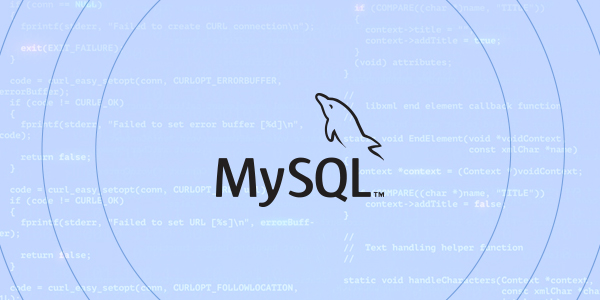
The system is built on C and C++ under the GNU General Public License and other proprietary licenses. The last version of MySQL 8.2.0 was publicized on 25th October 2023 with features like server startup and shutdown messages, hash table optimization for set operations, MySQL enterprise audit, pluggable authentication, MySQL enterprise firewall, MySQL privileges, etc.
Advantages of MySQL
★ MySQL is free and accessible for learners and professional developers.
★ It has an expansive community to assist with their knowledge and resources.
★ It is one of the seamless performing databases.
★ MySQL can be operated on UNIX, Windows, and many popular operating systems.
★ MySQL is renowned for agile performance and quick query execution.
★ The four pillars of MySQL include — Atomicity, Consistency, Isolation, Durability for data interpretation and integrity.
★ It has an intuitive interface with seamless setup and management of data.
★ It encourages replication and clustering for disposing of unwanted data.
Disadvantages of MySQL
★ Developers may come head to head with variability as the language sometimes showcases corruption issues.
★ A high storage of data equates to slower performance.
★ The older versions do not have built in JSON Support.
★ Its full text search capabilities may not be as progressive as other databases.
★ MySQL may suggest overhead options for certain workloads.
2. PostgreSQL
PostgreSQL or Postgres is a publicly accessible system created on programming languages like PL/pgSQL, C, PL/Python, PL/Perl, PL/R, and MORE by PostgreSQL Global Development Group in 1996.
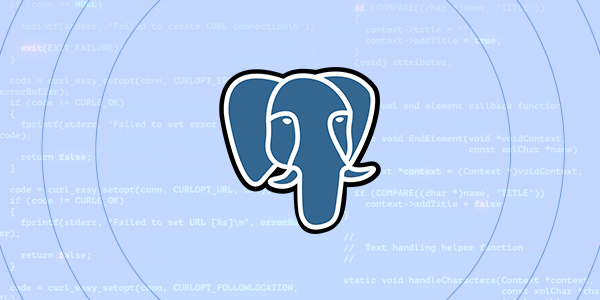
This is one of the most reliable and innovative database systems dealing with relational and non relational queries, and its stable release was on 9th November 2023.
The database system has numerous robust features like multi-version concurrency control (MVCC) point in time recovery, granular access controls, tablespaces, asynchronous replication, write ahead logging, and more.
Advantages of PostgreSQL
★ PostgreSQL is free to access by developers, meaning they can manipulate the system’s source code.
★ It is highly extensible, allowing developers to create their data types, operators, and functions.
★ Like MySQL, this one marches and follows the four foundations of data transmission and storage — Atomicity, Consistency, Isolation, and Durability.
★ PostgreSQL can be scaled to handle large datasets and high transactional loads.
★ Features such as constraints, triggers, and foreign keys ensure data protection.
★ The MVCC architecture guarantees no hindrances in the performance during data transmission.
Disadvantages of PostgreSQL
★ Learning and understanding the system can be challenging.
★ PostgreSQL sometimes lacks the potential to manage and store the data compared to other NoSQL database systems.
★ PostgreSQL functions on resources, and inaccurate configuration can exhaust them.
★ Banks & other financial institutions usually prefer other databases over PostgreSQL.
★ The initial setup of PostgreSQL can be tricky and requires expert assistance for a smooth process.
Also Read: Memory Virtualization In Cloud Computing
➔ NoSQL Databases
1. MongoDB
MongoDB, a leading and chosen database system, layered on JavaScript, Python, Java, Go, PHP, C, C++, Perl, and Ruby on 11 February 2009 by MongoDB Inc. It falls under Server Side Public License or proprietary and is flexible enough to operate on Windows Vista and later, Linux, OS X 10.7 and later, Solaris, and FreeBSD.
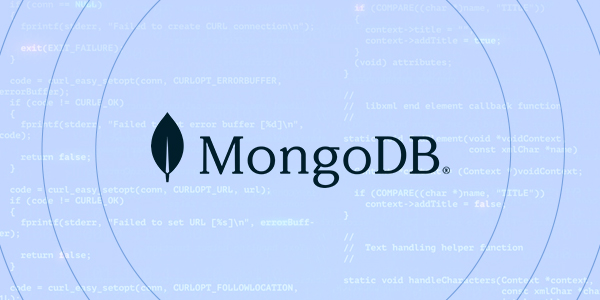
Like previously mentioned databases, this one, too, is accessible to other users, offering cross-platform compatibility and other spectacular features like schema less design, indexing, rich and expressive query language, replication, and more. Its last version, 6.0.7, was released on 28th June 2023.
Advantages of MongoDB
★ MongoDB’s document-oriented structure allows developers to work flexibly on the schema.
★ MongoDB’s horizontal scalability facilitates data distribution on multiple servers.
★ MongoDB offers a robust and suggestive query language for performance optimization.
★ Its framework is extremely adaptive, assisting developers to perform difficult calculations and make transformations faster.
★ The group of servers in MongoDB stores a similar data set for durability, fault tolerance, and automatic failover.
★ Developers can call out ad hoc queries while developing and testing.
★ The in-built support of geospatial data helps store and fetch location-based information.
★ The community always extends a hand with its extensive knowledge, tutorials, and forums.
Disadvantages of MongoDB
★ It depletes too much memory, especially when developers work with large amounts of data.
★ It does not sustain multi-document transferring throughout a variety of collections.
★ Setting up MongoDB can be tough.
★ Developers may experience ebb and flow during the learning process of MongoDB.
★ It does not validate conventional SQL joins and denormalization.
★ The usage of BSON in MongoDB can take up a lot of space, leading developers to pay the overhead.
★ Many organizations opt for unpaid commercial support options because MongoDB uses MongoDB Inc. as a backup for commercial support.
Also Read: Overview Of Network Virtualization In Cloud Computing
2. Cassandra
Cassandra is a libre, NoSQL data system created to manage heavy data over numerous servers. Established in 2008, it was a joint initiative of Google and the Apache Software Foundation, governed under the terms of the Apache License 2.0. On 24th July 2023 emerged, the stable version of the system, which is 4.1.3 with advanced features, promising a seamless experience to users.

From distributed architecture to linear scalability to schema-free model to query language, to atomic batches to docker support to integrated caching, Cassandra’s features profers scalability, no failure, and flexibility.
Advantages of Cassandra
★ Accommodating growing datasets and managing increased traffic is one of the specialties of Cassandra.
★ The distributed architecture of Cassandra guarantees applications run smoothly without minimal to zero downtime.
★ Cassandra erases possible chances of failure.
★ The higher the nodes, the better the performance.
★ Cassandra enables developers to customize the data structure and read & write operations.
★ It encourages backing up stored and revamped data to make sure everything stays the same in case of data failure or unwanted attacks.
★ The atomic batches in Cassandra execute operations automatically in all the data.
★ Developers can leverage the caching mechanism of Cassandra to dust off the same data.
Disadvantages of Cassandra
★ Understanding Cassandra can be overwhelming when you are not well versed with NoSQL.
★ Developers must heed upon data modeling to avoid complexities.
★ Management and maintenance of Cassandra should be taken care of by experts with prior experience.
★ Secondary indexing in Cassandra comes with restrictions and calculations.
★ Cassandra should not be used for simpler and smaller data structures.
Also Read: 4 Types Of Desktop Virtualization – A Comprehensive Guide
Factors to Consider When Choosing a Technology
Choosing the right technology is one of the pivotal decisions for the success of a project and business. From market demand to cost to efficiency and long term success, everything needs to be contemplated before ruling out a conclusion. This is why we have created a list of pointers to help you pronounce the verdict:
➢ Focus on your needs and the type of project you plan to build, including functionalities, performance, security, and integration, as this will act as a guiding light towards figuring out the suitable frontend and backend technologies and database systems.
➢ Consider the viability of the technology. Many technologies generate thriving results initially; however, the future unfolds differently, pushing you to switch to a different technology.
Be attentive to their communities, regular updates, and support from prominent vendors, as this assures the sustainability of your choice.
➢ Go for a technology that vouches for scalability and performance. Growth and swift functionalities are crucial for user experience, meaning once your target audience learns about your website or app, they will start using it, boosting the traffic, and you need a technology that can sail without any hassle.
Not to forget, higher storage capacity is equivalent to better response time. Don’t miss out on analyzing the throughput and resource utilization for steady functioning.
➢ Assess the overall sum for the pre and post lifecycle of the development, including domain, ownership, licensing fees, infrastructure and website development costs, and maintenance charges.
➢ Evaluate the development time and how rapidly the milestones can be achieved to understand where to expedite the process and complete the project before or on the pre determined timeline.
➢ Examine the community size and support. A vibrant community is a sign of force that will always stay by your side with their skills, expertise, and resources.
➢ Choose a technology that can efficiently become a part of your pre developed or made from scratch apps or websites.
➢ Pick the one that can flexibly accommodate the changing needs of your project, users, and market.
➢ Security features should be as powerful as you are. Look out for encryption, authentication mechanisms, and regulatory compliance.
➢ The resources hired for building the app or website should be proficient, professional, and fit your budget.
➢ Preferred technology should have the required tools and framework and corroborate with standard testing practices.
➢ Quality and detailing of the documentation should never be disregarded as accurate records simplify the onboarding, identify bottlenecks and troubleshoot them, and keep your website or apps top notch.
➢ Pick the open source technologies and understand their licensing terms before leveraging them.
Making the Final Decision
So far, this thorough write up highlighted the important reasons for ruling out the right technology, their introduction, pros and cons, and aspects to oversee upon selecting the ‘One.’ Always remember staying woke is indispensable in this ever-evolving tech world where every day you come across numerous technologies and their set of weaknesses and strengths.
Navigate the web development terrain by staying attuned to the latest trends and user demands. Tailor your digital presence to not only meet but exceed the expectations of you and your target audience for a seamless and cutting-edge online experience.
Frequently Asked Questions
There are numerous advanced web development trends, including Blockchain, IoT (Internet of Things), voice search optimization, AI first development, motion UI, virtual reality, and all of them are ideal for beginners. However, it is crucial for learners to gain a comprehensive understanding of the technical intricacies and other relevant aspects before delving into these advanced areas.
Creating a digital presence and generating quality traffic is only possible with effective SEO practices. SEO optimized websites enhance user experience, credibility, and trust, and most importantly, give you a competitive advantage.
As for the web development technology, Laravel and JavaScript always cease to impress the developers thanks to their swift and powerful performance, leading to reach at the top of SERPs. However, the rapidity of performance can vary based on factors such as the website’s design & type and the inclusion of data and visuals in it.
